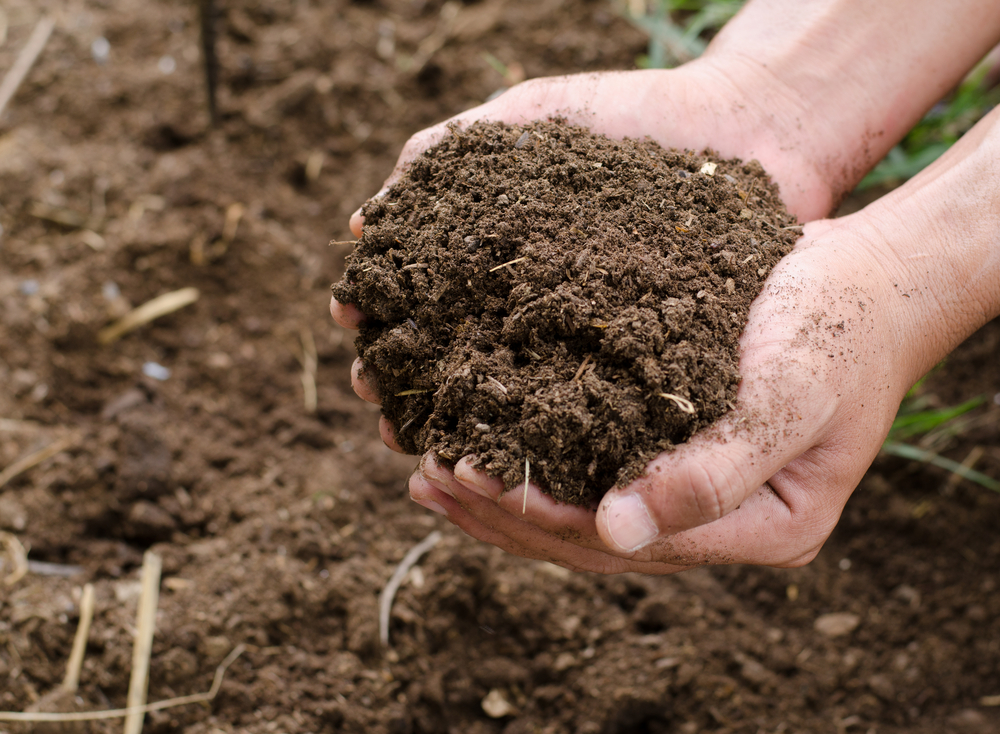I think the easiest way to think about soil biology is to think about our own gut microbiome. As defined by molecular biologist Joshua Lederberg, the gut biome is the totality of microorganisms — bacteria, viruses, protozoa, and fungi — and their collective genetic material present in the gastrointestinal tract (GIT). Hey, wait a minute, that sounds like a soil profile! Furthermore, when we have a broken or impaired GIT, it impacts our total health. This is no different from how poor soil health impacts the total health of the plant. It’s really that simple.
As shared by Christine Jones, it may come as a surprise to many that more than 95 percent of life on land resides in soil, and that most of the energy for this amazing world beneath our feet is derived from plant carbon. Exudates from living roots are the most energy-rich of these carbon sources. In exchange for “liquid carbon,” microbes in the vicinity of roots — and microbes linked to roots via networks of beneficial fungi — increase the availability of the minerals and trace elements required to maintain the health and vitality of their plant hosts.
Our soils have been depleted by harmful farming practices. As a counterbalancing strategy, it’s imperative to introduce hundreds of different species of microbes to our soils. We need to supply a broad landscape of biology to have the best chance of success. Microbes do not colonize all at once — it is important to add them over time so that some will pave the way for others. Products that can be applied through the drip provide a simple and effective means to accomplish this. Building back a diverse soil biome becomes an integral part of our fertility and pest management practices and, ultimately, influences our product quality. As our soils improve, more products can be layered in to create an even greater impact. When soils are active and processing nutrients, plants are getting healthier. Improved nutrition equals less plant disease. Less plant disease means farmers spend less money. Better fruit means more money, or what we always like to measure: a solid Return on Investment (ROI).
Microbes also contribute to the physiological processes of the plant, like alleviating abiotic stresses. When plants don’t have the buffer of quality soils, they’re more exposed, and more susceptible to, for example, high-salinity soils or heat stress. In a high abiotic stress environment, plants react instantly, showing declines in photosynthesis, metabolism, and respiration. This has dire consequences, as leaves turn away from the sun to shut down, and eventually fruit structure starts to decline. Hot fruit means the sugar-to-acid ratio goes south. There will be no rescuing the crop without a more diverse and intense microbiology doing its thing in the plant’s rhizosphere.
Science has advanced to show that soil microbes actually enter the plant through the end of the root hair. The microbes are nutrient-packed, shedding their outside “shell” as they circulate in the plant’s cells. Once they’ve released their nutrients, the plant pushes them back out through the root tips to capture and bring back more. As the plant exudates a portion of its photosynthetic energy through its own unique blend of sugars, enzymes, phenols, amino acids, nucleic acids, auxins, gibberellins, and other biological compounds, it’s signaling the microbes to perform certain functions like mineralizing specific nutrients or building and expanding bridges with mycorrhizal fungi. The plant is literally directing the soil biology to perform the function that it needs the most. It is interesting to note that foliar sprays can be a trigger to accelerate the exudation process. It’s like putting a little gas in the manifold. The exudation process becomes more robust, signaling the microbiology to deliver or mineralize a wider array of nutrients.
Post-harvest applications are extremely important for perennial crops to have a good start to the next season. It may be the most important application all year. This is especially germane after a year of little moisture. The applications can go through the drip or via foliar spray. Defoliation is excellent timing for a post-harvest application as there is a fresh incision when the vascular tissue disconnects from the vine and the leaf falls off. The foliar spray helps protect that open incision and systemically travels throughout the plant to protect it. Once the beneficial bacteria are in the vascular tissue, detrimental microbes have little place to reside. Pre- and post-harvest pruning would be another ideal application time. We’ve found that these systemic applications do a great job of mitigating Eutypa in grapevines and fungal canker diseases (i.e., Ceratocystis) in nut and stone fruit trees.
Our “Cream of the Crop” package for increasing both the intensity and diversity of microbiology in the soil starts with MetaGrow ST compost tea made from earthworm castings and green waste compost. MetaGrow ST is manufactured by sixth-generation farmers. It delivers the most microbes per dollar among all comparable products in the market. It’s constantly being improved as new science presents itself and has a long track record of success. Our foliar application along with MetaGrow ST includes a combination Pacific Gro oceanic fish hydrolysate, and Sea-Crop, a liquid combination of elements and minerals from seawater. We also add MFOOD, a microbial food package that helps to extend the benefits of the program.
Finally, as mentioned in a previous newsletter, California and other states continue to reduce the allowable amounts of synthetic applications of nitrogen and phosphorus. Increasing your soil’s biology is another way to achieve excellent results with less.





